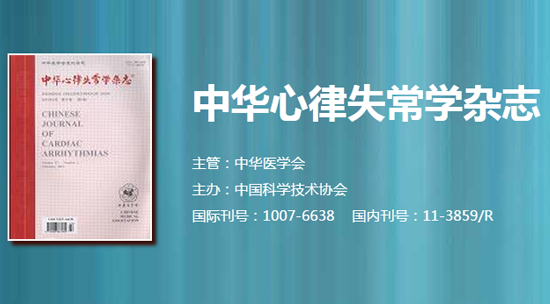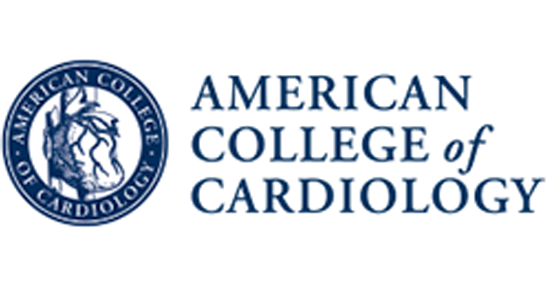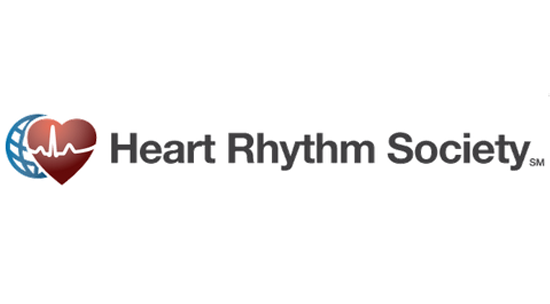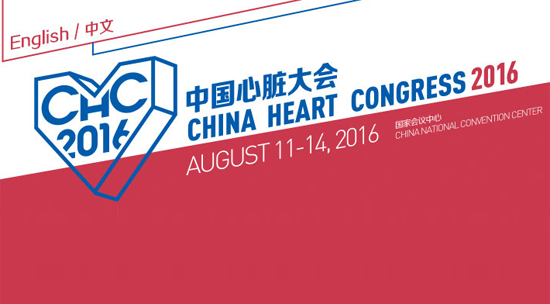Heart Rhythm主编—陈鹏生教授语音速递(七月刊 英文版)
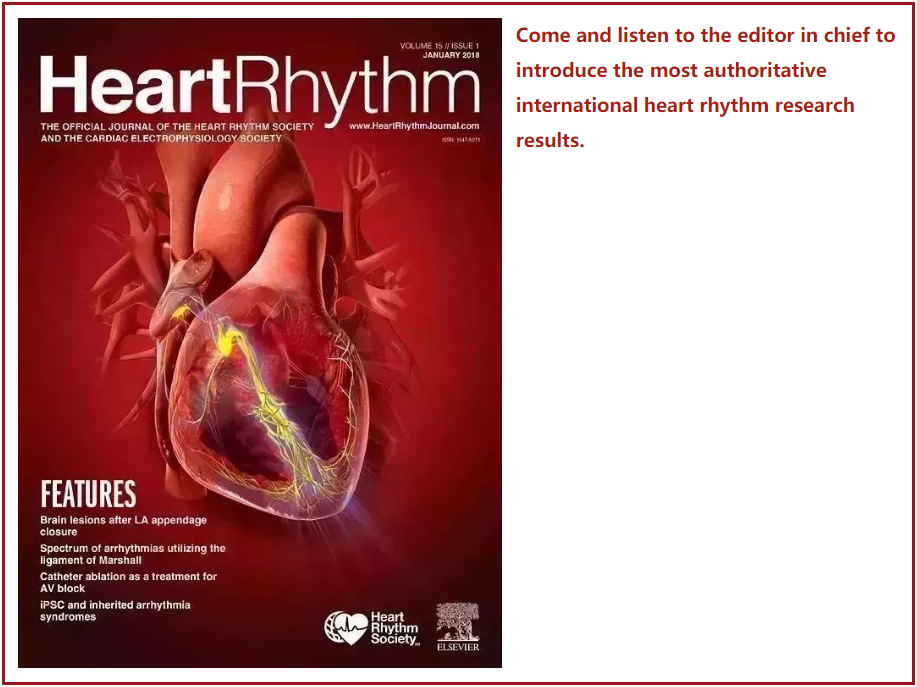
Peng-Sheng Chen
Hello, I am Dr Peng-Sheng Chen, the editor-in-chief of Heart Rhythm. Thank you for listening to this podcast, which covers the July 2018 issue of Heart Rhythm.
1
The featured article this month is titled “Cybersecurity vulnerabilities of cardiac implantable electronic devices” by David Slotwiner et al from Weill Cornell Medical College, New York. An author interview conducted by our online editor, Dr Daniel Morin can be found at the www.heartrhythmjournal.com website. Computers, networking, and software have become essential tools for health care. Our daily lives increasingly depend on digital technology, and we are persistently bombarded by the need to secure the systems and data they generate and store from attack, damage, and unauthorized access. Cybersecurity vulnerabilities of cardiac implantable electronic devices (CIEDs) are no longer hypothetical. Therefore, the HRS, ACC, FDA, FBI and patient representatives held a summit conference in November 2017 about Cybersecurity. This article summarizes the participants’ recommendations on how to manage the cybersecurity of the CIEDs.
2
The next article is “Mechanical Function of Left Atrium Is Improved With Epicardial Ligation of Left Atrial Appendage” by Dar et al from the University of Kansas. The data came from the LAFIT-LARIAT Registry. A total of 66 patients who underwent successful LA appendage exclusion were included. The results showed that LA appendage occlusion reduces LAVI, or the ratio between LA volume and the body surface area. The LAVI is predicative of clinical outcomes in patients with AF and other heart diseases. These data suggest that LA appendage ligation causes structural and a hemodynamic benefits in addition to preventing stroke. However, the study is limited by the small sample size and the retrospective study design. A prospective study with a control group is needed to confirm these findings.
3
Next up is “Effect of dual-chamber minimal ventricular pacing on paroxysmal atrial fibrillation incidence in myotonic dystrophy type 1 patients” by Russo et al from Monaldi Hospital, Naples, Italy. AF is a common finding in the myotonic dystrophy type 1 (DM1) population. DM1 is an autosomal dominant, multisystem disease with increased risk for both brady- and tachyarrhythmias. The authors randomized 70 DM1 patients with dual-chamber pacemakers to minimizing ventricular pacing features ON or OFF. The results show that minimal ventricular pacing is an effective strategy for reducing the risk of AF in DM1 patients who have undergone pacemaker implantation. The results suggest that dual chamber pacemakers with minimal ventricular pacing can both prevent bradycardia and reduce the risk of AF. More studies will be needed to determine if early pacemaker implantation is indicated in patients with DM1.
4
Rovaris et al from San Gerardo Hospital, Monza, Italy wrote the next article, entitled “Does the CHA2DS2-VASc score reliably predict atrial arrhythmias?” The authors studied 2410 patients with no documented AF who had received a cardiac device with diagnostics available regarding atrial high rate episodes. Over a median duration of 2 years, the incidence of atrial high rate episodes was higher among those with higher CHA2DS2-VASc scores. At receiver operating curve analysis, CHA2DS2-VASc ≥2 was estimated to predict persistent forms of atrial high rate episodes. The authors conclude that in a CIED population with no previous diagnosis of clinical AF, the incidence of atrial high rate episodes increased with increasing CHA2DS2-VASc score. However, patients with device-detected atrial high rate episodes seem to be at lower risk for thromboembolic events compared to the general AF population. Therefore, the net clinical benefit from anticoagulation of these patients might be less than in patients with AF. In the absence of further data, this study alone does not indicate that all patients with high CHA2DS2-VASc scores should be anticoagulated.
5
Next up is “Pulmonary vein activity does not predict the outcome of catheter ablation for persistent atrial fibrillation” by Prabhu et al from Alfred Hospital, Victoria, Australia. A total of 123 patients underwent catheter ablation for AF. PV isolation was achieved in 100% of patients. Multiprocedure success was achieved in 76% of patients at 2 years. PV activation cycle length and the presence of PV AF did not predict multiprocedure success. An implication of the study is that the PV activity cannot be used to identify patients most likely to benefit from a PV-based ablation strategy. These studies also suggest that other factors, such as the influence of autonomics, non-PV triggers, and atrial fibrosis might play important roles in the persistence of AF.
6
The next article is “Association of regional epicardial right ventricular electrogram voltage amplitude and late gadolinium enhancement distribution on cardiac magnetic resonance in patients with arrhythmogenic right ventricular cardiomyopathy” written by Shuanglun Xie and his coauthors at the University of Pennsylvania. Preprocedural LGE-CMR and epicardial electrogram mapping were performed in 10 ARVC patients. The locations of epicardial electrogram map points were retrospectively registered to the corresponding LGE image regions. The authors found that increased RV gadolinium uptake is associated with lower epicardial bipolar and unipolar electrogram voltage amplitude. The authors performed substrate based ablation of these 10 patients. After an average of 3 years of follow up, 8 patients remained free from arrhythmia. The authors conclude that the use of standardized LGE-CMR signal intensity z-scores may augment preprocedural planning for ablation in patients with ARVC, via identification of low-voltage zones and abnormal myocardium. This study is limited by the single center retrospective study design, but the results are encouraging.
7
Next up is a paper titled “Safety and feasibility of leadless pacemaker in patients undergoing atrioventricular node ablation for atrial fibrillation” by Yarlagadda et al from University of Kansas. This multicenter observational study included 127 patients undergoing AVN ablation and pacemaker implantation. Roughly half of the patients received a leadless pacemaker, and half had conventional transvenous pacemakers. After a medium of one year of follow up, 95% of the leadless pacemaker group and 97% of the conventional transvenous pacemaker group had acceptable sensing and pacing thresholds. No significant differences were noted in complication rates. These results support the feasibility and safety of leadless pacemakers compared with conventional transvenous pacemakers in patients undergoing AVN ablation for AF. A limitation of the study is that the follow up duration is only one year, and that the patients were not randomly assigned to these two groups. However, I did find it interesting that roughly half of all patients received a leadless pacemaker after AVN ablation. This shows that many practicing EP physicians have accepted the leadless pacemakers as a safe alternative for pacemaker dependent patients.
8
The next article is titled “Magnetic resonance imaging safety in nonconditional pacemaker and defibrillator recipients”. This is a meta-analysis and systematic review written by Shah et al from Emory University. The authors analyzed 70 studies of non-MRI conditional devices undergoing MRI, allowing for analysis of 5000 patients who underwent roughly 6000 MRI studies. All lead characteristics and battery voltages showed very small, clinically insignificant changes when assessed as a pooled cohort, although cases of clinically relevant outcomes were also noted. These relevant outcomes include lead failure in 3, ICD shock in 1 and electrical reset in 94. Electrical resets were found only in older devices. In conclusion, this review demonstrated low lead failure and clinical event rates in non-MRI conditional pacemaker and defibrillator recipients undergoing MRI. However, clinically relevant outcomes did occur in some patients. These results reinforce the need for ongoing vigilance and caution, particularly with older devices.
9
Next up is “Effect of ventricular pacing lead position on tricuspid regurgitation” by Schleifer et al from the Mayo Clinic. This is a randomized prospective trial comparing pacing leads in the RV apex, RV mid-septum, or LV via the coronary sinus in a 1:1:1 fashion. Patients with preexisting moderate or greater tricuspid regurgitation were excluded. At one year, 6 patients, or 6.4% of all patients, developed new moderate or severe tricuspid regurgitation. Neither pacing lead position nor diameter appears to affect tricuspid regurgitation development significantly. LV-coronary sinus leads failed to achieve a statistically significant reduction in tricuspid regurgitation as compared with RV leads. Tricuspid regurgitation can be a significant complication for RV lead placement. It is unfortunate that none of the alternative locations of lead placement reduced the incidence of tricuspid regurgitation at one year.
10
Coming next is “Endocardial left ventricular pacing across the interventricular septum for cardiac resynchronization therapy” by Gamble from Oxford University Hospitals. The purpose of this study was to develop an alternative approach to LV pacing, by placing the LV lead endocardially via an interventricular septal puncture, and to assess the feasibility and safety of this technique. The authors studied 20 patients, including 15 with failed transvenous LV lead placement and 5 CRT nonresponders. The experimental procedure was successful in all, with no serious complications. Clinical composite score improved at 6 months in 65% and worsened in 35%. One patient suffered a lacunar ischemic stroke. After 2 years of follow-up, 3 patients died and 2 patients suffered transient ischemic attacks. The authors conclude that LV endocardial pacing via interventricular septal puncture in patients for whom standard CRT is not possible is similarly effective and durable, with significant but potentially acceptable risks. However, in spite of anticoagulation, there may be a small increase in the rate of stroke over the rate expected in these patients. A limitation of the study is that it did not include a comparison group with His bundle pacing, which does not require placing a lead to pace the LV directly. Recent data have suggested that His bundle pacing might be useful in patients with CRT indications.
11
Next up is “A comparative study of acute and mid-term complications with leadless and transvenous cardiac pacemakers” by Cantillon et al from the Cleveland Clinic. This multicenter study evaluated the safety and efficacy of the Nanostim leadless pacemaker compared with single chamber transvenous pacemakers. The authors found that patients with leadless pacemakers experienced fewer overall short and mid-term complications, including infectious and lead- and pocket-related events, but more pericardial effusions, which were uncommon but serious. A major advantage of leadless pacemakers is the elimination of pocket and lead related complications. The tradeoff is the need to use a large vascular delivery sheath in the femoral vein, resulting in increased vascular events. The authors also reported that 3 of the 7 patients with leadless pacemakers and pericardial effusion required surgery, suggesting the existence of tearing-type injuries. Overall, the results are consistent with other studies that show good clinical outcomes in patients with leadless pacemakers.
12
The next article is “Diagnostic value and prognostic implications of early cardiac magnetic resonance in survivors of out-of-hospital cardiac arrest” written by Zorzi et al from the University of Padova, Italy. The authors enrolled 44 patients with out of hospital cardiac arrest who underwent coronary angiography and cardiac magnetic resonance, or CMR within 7 days after admission. Coronary angiography identified obstructive coronary artery disease in 18 patients. Among the remaining 26 patients without obstructive coronary artery disease, CMR confirmed the clinical diagnosis in 58% and modified the clinical diagnosis in 42% by demonstrating previously unrecognized myocardial substrates. The importance of this study is the high diagnostic yield and the important prognostic information offered by early CMR studies. However, the study is limited by its retrospective nature. A prospective study will be needed to confirm the value of early CMR in patients with cardiac arrest.
13
Next up is an article by Landstrom et al from the Texas Children's Hospital. The article is titled “Amino acid–level signal-to-noise analysis of incidentally identified variants in genes associated with long QT syndrome during pediatric whole exome sequencing reflects background genetic noise.” The authors studied whole exome sequencing variants of 17 LQTS-associated genes. They found variants in LQTS case-associated genes were present in 38.3% of 7244 whole exome sequencing probands. Based on amino acid–level analysis, those variants are indistinguishable from healthy background variation, whereas LQTS1 and 2 case-identified variants localized to clear pathologic “hotspots.” These findings indicate that the prevalence of incidentally identified LQTS-associated variants is ∼38% among whole exome sequencing tests. These variants most likely represent benign healthy background genetic variation rather than disease-associated mutations. While whole genome sequencing is a highly sensitive technique in detecting genetic variants, the specificity is limited.
14
The next article is also related to genetic testing. The article is titled “Lack of genotype-phenotype correlation in Brugada Syndrome and Sudden Arrhythmic Death Syndrome families with reported pathogenic SCN1B variants”. The article was written by Gray et al from Royal Prince Alfred Hospital, Sydney, NSW, Australia. The authors sought to characterize the genotype-phenotype correlation in families who had Brugada syndrome and Sudden Arrhythmic Death Syndrome with reportedly pathogenic SCN1B variants and to review their pathogenicity. A total of 23 SCN1B genotype-positive individuals were identified from 8 families. Only 2 of 23 genotype-positive individuals demonstrated a spontaneous Brugada ECG pattern. Drug challenge testing in 13 of 15 was negative. The lack of genotype-phenotype concordance among families, combined with the high frequency of previously reported mutations in the Genome Aggregation Database browser, suggests that SCN1B is not a monogenic cause of Brugada Syndrome and Sudden Arrhythmic Death Syndrome. This study adds to an increasing list of pathogenic variants that were subsequently proven to be benign. These two articles indicate that the genetic test results must be interpreted with caution. Correct characterization of the phenotypes of the diseases remains a cornerstone of the diagnosis of arrhythmia syndromes.
15
Bear et al from Fondation Bordeaux Université, Pessac, France wrote the following article titled “Cardiac electrical dyssynchrony is accurately detected by noninvasive electrocardiographic imaging”. The Noninvasive electrocardiographic imaging, or ECGi, is a method to perform high-resolution imaging of epicardial activation. The authors suspended Langendorff-perfused pig hearts in a human torso-shaped tank, with left bundle branch block induced through ablation. The hearts were then mapped simultaneously with 108-electrode epicardial sock electrode and also ECGi. The authors found that the ECGi correctly diagnosed electrical dyssynchrony and interventricular resynchronization in all cases. They conclude that ECGi reliably and accurately detects electrical dyssynchrony, resynchronization by biventricular pacing, and the site of latest activation, providing more information than do body surface potential. A clinical implication is that ECGi can be used as a non-invasive tool to accurately determine epicardial dyssynchrony. A limitation is that ECGi cannot be used to study the endocardial or septal dyssynchrony. Further investigation and development of methods are required.
16
Next up is a paper titled “HuR-mediated SCN5A messenger RNA stability reduces arrhythmic risk in heart failure” by Zhou et al from Brown University. ELAVL1/HuR is an mRNA stabilizing protein. The purpose of this article was to investigate whether HuR regulates SCN5A mRNA expression and whether manipulation of HuR benefits arrhythmia control in the HF mouse model. The authors showed that HuR was associated with SCN5A mRNA in cardiomyocytes, and expression of HuR was downregulated in failing hearts. Injection of AAV9 viral particles carrying HuR increased SCN5A expression in mouse heart tissues after MI. These data indicate that HuR is an important RNA-binding protein in maintaining SCN5A mRNA abundance in cardiomyocytes. Reduced expression of HuR may be at least partially responsible for the downregulation of SCN5A mRNA expression in ischemic heart failure. Overexpression of HuR may rescue decreased SCN5A expression and reduce arrhythmia risk in heart failure. These findings are potentially clinically important because it suggests a new paradigm in antiarrhythmic therapy through mRNA manipulations.
17
Martins et al from France wrote a contemporary review article, entitled “Cardiac electronic implantable devices after tricuspid valve surgery”. The demand for tricuspid valve surgery has increased continuously in the last years. Recent registry data have confirmed that tricuspid valve repair or replacement carries an increased risk of conduction disorders requiring permanent pacemaker implantation, specifically for patients having multivalve surgery. The implantation of an endocardial right ventricular lead in those patients may impair tricuspid valve function, and some other approaches may be considered to avoid traversing the valve. This contemporary review describes the different options currently available for patients requiring pacemaker or defibrillator lead implantation after TV surgery.
18
The next one is also a contemporary review. It is titled “Management of cardiac implantable electronic devices in the presence of left ventricular assist devices” by Parikh et al from University of Kansas. Left ventricular assist devices, or L-VADs, are increasingly used in the management of patients with advanced heart failure. Many of these patients already have, or will be considered for, a cardiac implantable electronic device such as an ICD or a CRT device. Frequent interplay between these electronic devices and LVADs is often encountered due to the complexity of these devices and the underlying disease states. Proactive management strategies and an awareness of interactions may help reduce adverse events. Here, the authors review the current literature, present management recommendations, and discuss potential future investigations for cardiac implantable electronic devices in patients with LVADs.
19
Next up is “Predicting arrhythmic risk in arrhythmogenic right ventricular cardiomyopathy: A systematic review and meta-analysis” by Bosman et al from University of Utrecht, Utrecht, The Netherlands. The authors found 45 studies with a median cohort size of 70 patients. The average risk of ventricular arrhythmia ranged from 3.7 to 10.6% per year, depending on the population with ARVC. Male sex, syncope, T-wave inversion in precordial leads beyond V3, right ventricular dysfunction, and prior VT/VF consistently predict ventricular arrhythmias in all populations with ARVC.
20
The next one is a Hands-on article entitled “Implantation of the subcutaneous ICD with truncal plane blocks” by Miller et al from Mount Sinai, New York. The SICD implant procedure involves incision and dissection in the richly innervated midaxillary line. Intraoperative local anesthetic wound infiltration is routine and provides moderate analgesia, but the effects are short-lasting, and complete coverage of the affected areas is difficult. In this article, the authors demonstrated that adjunctive regional anesthesia using truncal blocks was safe and technically feasible. This technique may be useful to physicians who perform SICD implantations.
In addition to the above articles, this month the Journal also publishes a special article from Dr Michael Rosen entitled “Would I do it again? Reflections on a career in academia and electrophysiology”, a Josephson and Wellens ECG lesson titled “A change from atrial fibrillation into a wide QRS tachycardia in a 69-year-old man”, an image of Tension pneumopericardium after pericardiocentesis, and four EP news articles.
I hope you enjoyed this podcast. For Heart Rhythm, I’m Editor-In-Chief, Dr. Peng-Sheng Chen.
